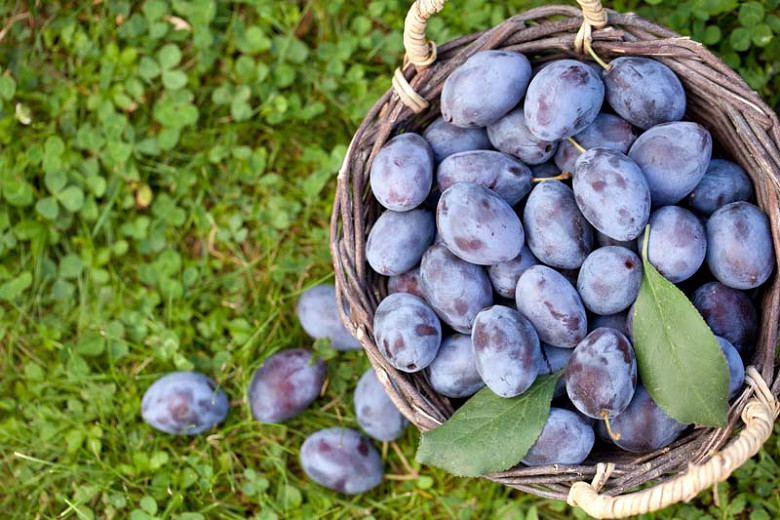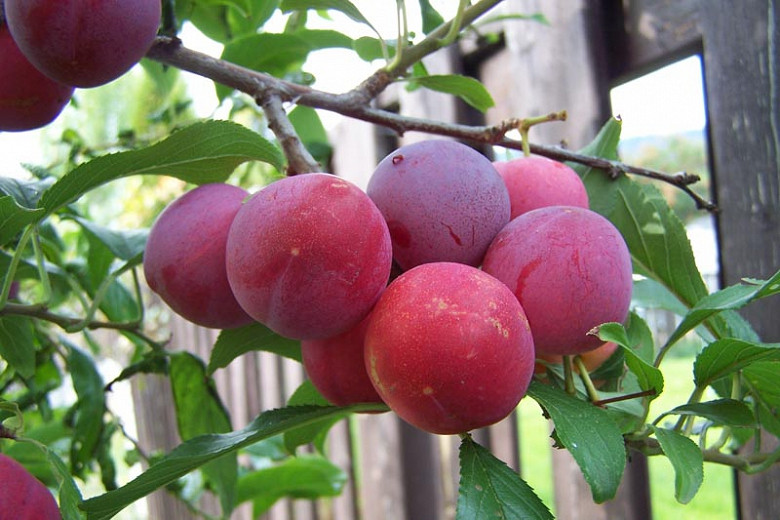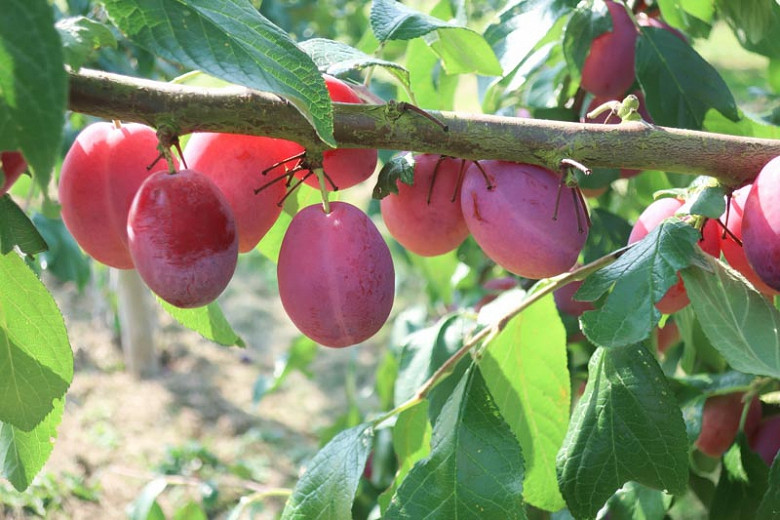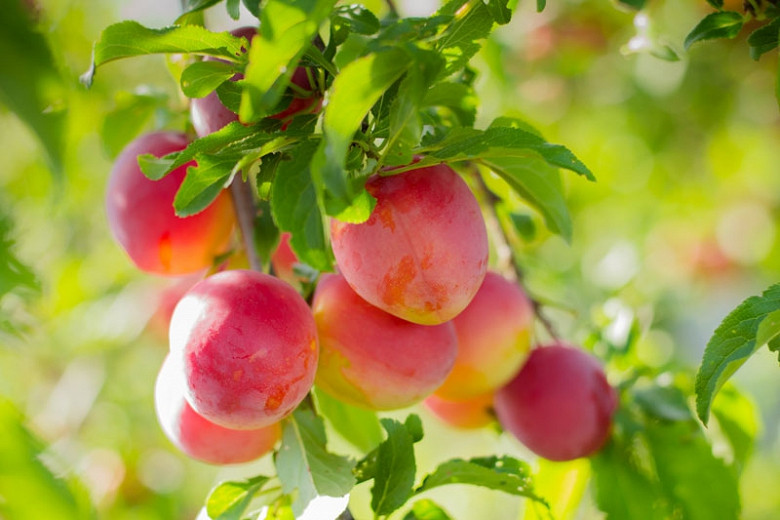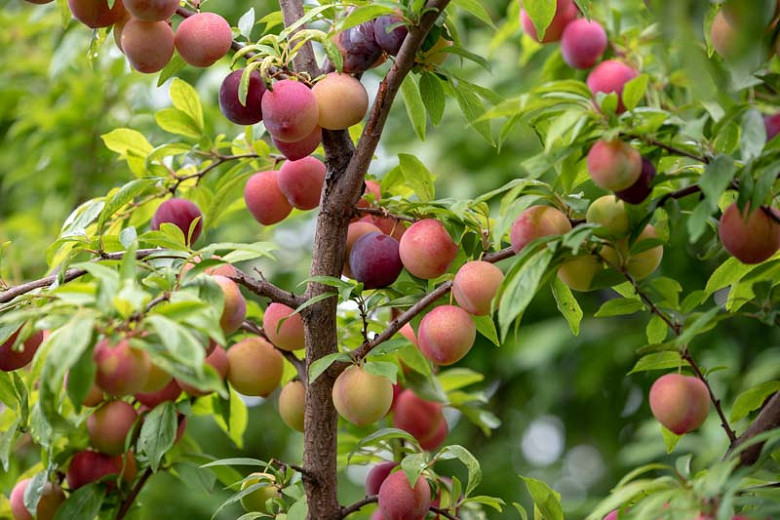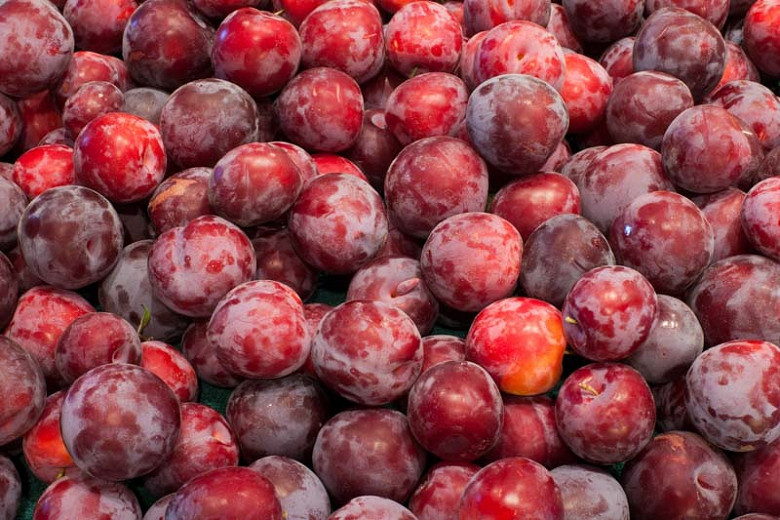Prunus insititia (Damson Plum)
Regarded as the ancestor of the plums we eat today, Prunus insititia (Damson Plum) is a deciduous tree with a low canopy clothed in elliptic, finely serrated, green leaves. In mid-spring, it bursts into a profusion of white 5-petaled blossoms, creating a spectacular display.
Regarded as the ancestor of the plums we eat today, Prunus insititia (Damson Plum) is a deciduous tree with a low canopy clothed in elliptic, finely serrated, green leaves. In mid-spring, it bursts into a profusion of white 5-petaled blossoms, creating a spectacular display. They are followed by a bountiful crop of small to medium, oval, bluish purple, juicy plums. The fruit has a sharp taste, between bitter and sour, and is more suitable for jams and jellies than eating raw. Damson Plum is self-fertile, cold hardy, and grows well with little care. A relatively small tree that is perfect for the home garden. Good choice windbreak or hedging.
- Typically grows up to 12-15 ft. tall and wide (3-5 m) at maturity.
- Performs best in full sun in well-drained soils.
- This Plum tree will begin fruiting in 3 growing seasons.
- This plum tree has a chill hours requirement of 650 (hours of temperatures below 45ºF (7ºC) in the winter for their buds to open in the spring).
- No routine pruning is necessary. Remove diseased, damaged, congested, or crossing shoots.
- Propagate by seed, although softwood cuttings in early summer with bottom heat can be successful.
- Keep an eye out for aphids, caterpillars, fruit tree red spider mites, brown scale, plum moth, and silver leaf.
- Native to C & S Europe N Africa
Requirements
| Hardiness | 5 – 10 |
|---|---|
| Plant Type | Fruit, Trees |
| Plant Family | Prunus – Fruit Trees, Plums |
| Exposure | Full Sun |
| Season of Interest | Spring (Mid)Summer (Late)Fall |
| Height | 12' – 15' (3.6m – 4.5m) |
| Spread | 12' – 15' (3.6m – 4.5m) |
| Water Needs | Average |
| Maintenance | High |
| Soil Type | Clay, Loam, Sand |
| Soil pH | Neutral |
| Soil Drainage | Moist but Well-Drained, Well-Drained |
| Characteristics | Showy, Fruit & Berries |
| Attracts | Birds |
| Garden Uses | Hedges and Screens |
